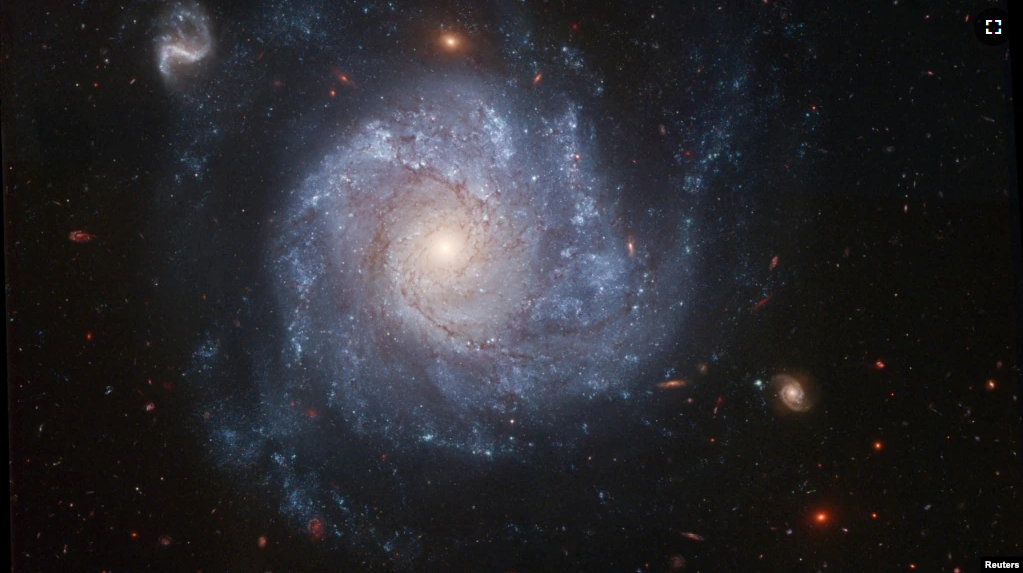Scientists have identified a star that, they say, survived a massive explosion and ended up being brighter than before.
The star is a kind known as a “white dwarf.” These are very dense objects that have a mass about equal to the sun. But they can be as large as planets like Earth. A white dwarf is formed when the star burns off all its central nuclear fuel and loses its outer layers.
Astronomers observed the white dwarf star with the Hubble Space Telescope. The telescope is operated by the American Space Agency NASA.
The Hubble has discovered “the oldest burned-out stars in our Milky Way Galaxy,” NASA reported. Some ancient white dwarf stars seen by Hubble are estimated to be 12 to 13 billion years old. That is nearly as old as the universe itself.
The observed star is in a galaxy called NGC 1309. It is about three quarters the size of our Milky Way. The white dwarf is about 108 million light years from Earth. A light year is the distance light travels in a year.
The observation team said that at some point, the white dwarf reached a mass that was 1.4 times the sun’s mass. This led to thermonuclear reactions in the star’s center that caused a supernova event.
NASA describes a supernova as an “extremely bright, super-powerful explosion of a star.” A supernova takes place at the end of a star’s life. The scientists say the supernova should have killed off the white dwarf star but did not.
The research was led by a team at the Las Cumbres Observatory in California. The lead writer of a study describing the finding was astronomer Curtis McCully.
He told Reuters news agency, “During the explosion, radioactive material was produced. This is what powers the brightness of the supernova.” He added that some of the material “was left over in the surviving remnant star” and acted as fuel to heat it.
“We were quite surprised that the star itself had not been destroyed but had actually survived and is brighter than before it exploded,” McCully said.
There are different kinds of supernova events. Each depends on the size and chemical makeup of the star and the power of the explosion.
This observed white dwarf produced an uncommon kind of supernova called “Type Iax,” the Las Cumbres Observatory said in a statement. The team said this kind is less bright and weaker than traditional “Type Ia” supernovas.
Scientists believe this kind of supernova does not destroy the white dwarf. Instead, it leaves behind an “undead” remnant. This theory is confirmed by the new observations, the research team said.
“We have called these objects ‘zombie stars’ for this very reason. They died, but not quite,” McCully said. Earlier experiments involving supernova activity had suggested that in some cases, white dwarf stars were able to survive these kinds of events. “It’s exciting to think that was telling us something about the actual physics of these supernovas,” McCully added.
Scientists have discovered about 50 supernovas of this kind. But until now, they had not been able to identify the surviving white dwarf star.
Scientists believe that our sun is also likely to become a white dwarf one day. This happens to about 97 percent of stars. But the event involving our sun is not expected to happen until at least 5 billion years from now.
I’m Bryan Lynn.
Reuters and the Las Cumbres Observatory reported on this story. Bryan Lynn adapted the report for VOA Learning English.
We want to hear from you. Write to us in the Comments section, and visit WWW.VOA-STORY.COM
___________________________________________________________________
Words in This Story
galaxy – n. one of the independent groups of stars in the universe
remnant – n. a piece of something that continues to exist when the rest of that thing goes away
zombie – n. a dead body that walks around, as portrayed in fictional stories
